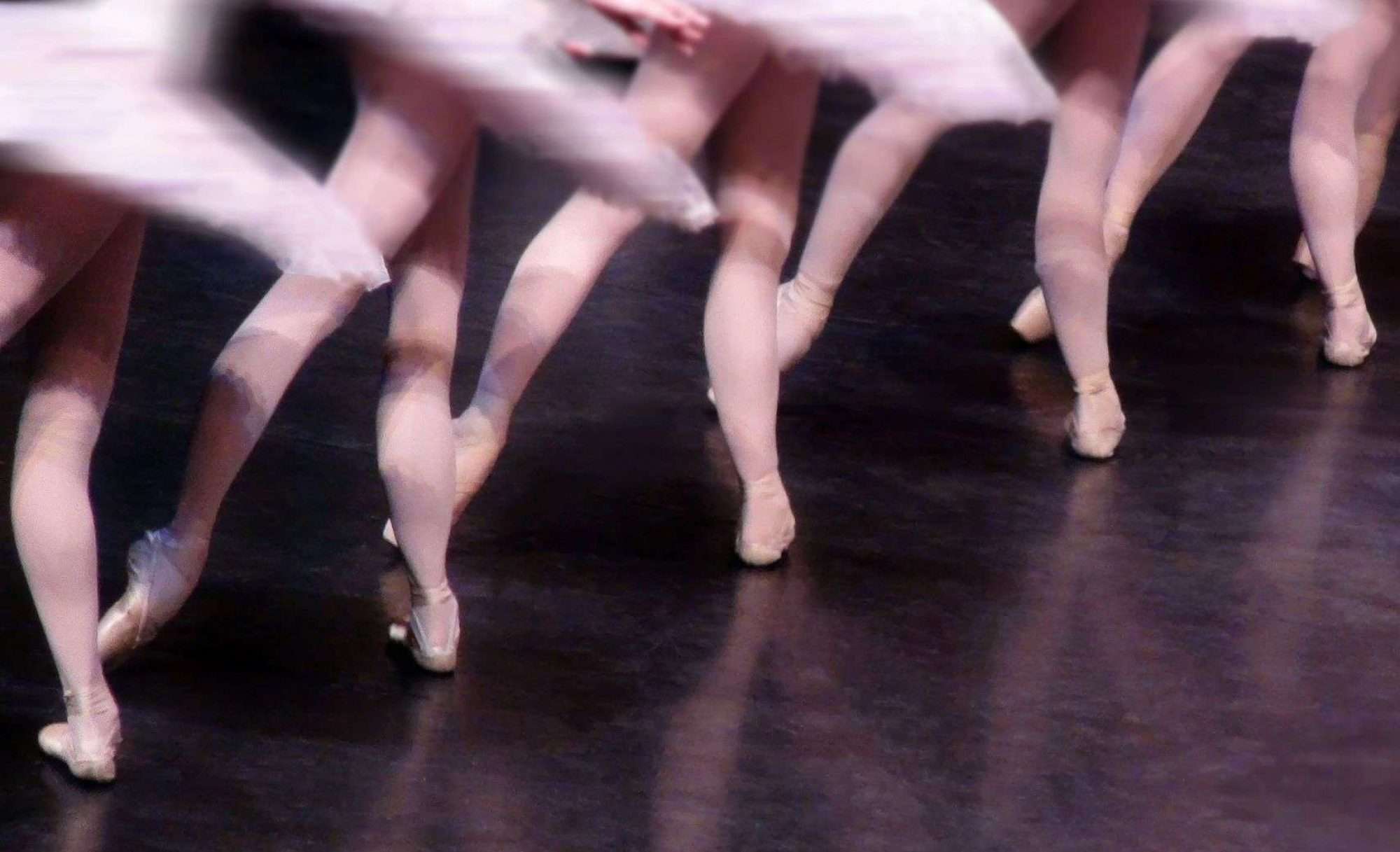This can be a tough age for ballet, especially depending on how long the student has been taking ballet prior to this age.
Ballet Dress Code
When I was the director of the ballet program at Town and Village School of Dance in Paris, Kentucky, I had a dress code that seemed to get the kids excited about moving into the next level. I can’t remember the basic colors anymore, but everyone wore pink tights and shoes (the girls anyway–boys wore black leggings and white shirts with white socks and shoes), and each level had a different color and style of leotard. Some had short sleeved maroon leotards, others had camisole green, and the oldest group could wear any style of black. You wouldn’t think a simple thing such as dress code could motivate students, but it really did. And at the age of 10-12 was about the time they were allowed to start wearing camisole leotards instead of short sleeved or cap sleeves. They couldn’t wait to get into that level so they could look more grown up and wear a completely new color (it was like a forest green).
Ballet Exercises
As far as exercises go, this age group is looking forward to pointe as the next big step. It may not happen for the next 2-3 years for them, but explaining how releves can be done by snatching the foot underneath or by going over to the toes (and telling them that this is important information for them to know when they go on pointe), also piques their interest, because they know right around the corner they will be looking forward to pointe shoes. Sometimes at this age, if the students have been taking ballet previously, I would allow them to get the pre-pointe shoes that have a hard box and no shank, just so they can get the feeling of working in a pointe shoe without actually going up on the toes.
Some steps I remember this age group enjoying were waltz turns that sweep across the floor, varying the arm movements and allowing them to really travel and feel like they are dancing. Also teaching them emboite turns is great at this age, and pirouettes. I always started out with pirouettes from 5th position, working on 1/4 turns first, then 1/2 turns and single full turns. They also enjoy learning jumps that have beats in them, such as royale, jete battu, as well as entrechat quatre and assemble battu.
At the Barre
At the barre, adding doubles to frappes is always a fun exercise, especially once they understand it and can do it. Also adding some simple turns at the barre is good at this age. It can be frustrating at first, but I think flic-flacs are great to teach to this age level, both en dehors and en dedans. Rond de jambe en l’air is great, starting out at 45 degrees so they can keep their alignment squared off, and having them do stretching exercises with a partner can also be helpful. The person holding the working dancer’s leg when it is 90 degrees side can learn how to tell if the person is using their turnout and letting go of the big muscles or not. “Let me have the weight” is a good thing to have them communicate, so the working person can relax the muscles and settle into a very square, turned out position that is right for them, before the other person lets go and allows them to imprint the feeling in their muscles.
Perk up the Ballet Class
Using fun music is always a good way to perk up class if you feel they are losing interest. Keeping them challenged is the most important thing you can do to make them feel that they are learning new things all the time and that they are getting ready for pointe work. Doing lots of releves on one or two legs to strengthen their calves and ankles is important. Working through the feet so they can articulate very clearly between a fully pointed foot and a foot pointed just at the metartarsal is good for strengthening their feet and toes.
Appropriate Level
Give them things that are too hard for them to do in the center, without the aid of the barre, such as entrechat quatre or even entrechat six, jete battu or assemble battu, sissone, etc. Maybe even allow them to observe your most advanced students in a class where they can see them doing these steps with ease will also serve to keep them interested in continuing their ballet education so they can make it to that point too.
Good luck and let me know if any of these are helpful tips. If you have more to add, please share them in the comments!



very exciting
This is a really nice and helpful post. You mentioned partner stretching, and I think that this age group really does enjoy working in pairs – so long as they can remain quiet and respectful in class. This is also a self-conscious age, so use restraint when correcting or touching students.
Love, love your posts!
That is true, Catherine. Thanks for bringing up those points!
Very good they can be testing with behaviour and maintaining technique can be challenging but its very rewarding when they achieve and keep the points comming please
Congratulations to your site!! Brilliant idea, so helpful and well thought-through! It is is a fantastic idea to make knowledge available for everyone.
One of my colleagues who I coach presently said I should share my observations on the mood/energy transmission between teachers and students specifically at this age group. (As the rest is complete-you did great work.).
As teachers we create the work atmosphere in class. If we feel anxious about teaching certain steps or feel the need to achieve something specific, the students respond to this, getting tense physically as well as in their brains finding it hard to think and taking things in. Sensitive students often tend to feel a certain responsability for success (being “good” students) and then feel guilty if the desired by the teacher is not quickly achieved. Other students respond to this tension “shaking” it off, being noisy, talking, not concentrating or i.e. bite nails as an example for a form of de-stress. Also if we are not well enough prepared to keep the students continuously occupied or, not clear enough in what we want from them, they start loosing interest, concentation and might start asking questions. (I am not talking about asking questions in general, but asking questions in this specific case is not desired as it interrupts the class flow.).
Every reaction we get from our students is in a certain way a reflection of ourselves as teachers and our approach to our work in that moment. The students own/ from home issues etc. generally don`t influence that much. That`s exceptional as children at this age come to class because they love dancing and want to do it. So it is vital that as teachers we look after ourselves and do what we need to be centred and well with ourselves. Apart from regular training to be physically capable I often recommend meditation, or similar exercise classes especially to teachers who have to put up with a lot of noise in class (i.e. tap classes); making sure they get calm moments for themself to get centred. Apart from that it is vital to have supervision, to have someone to professionally fall back on with anything you need from just finding understanding to counselling, feedback, ideas etc.
This is why I think this site is great, Mrs. Rhoades!! You obviously love your work. Will now publish your site on my facebook sites, so here in Tenerife (Canary Islands, Spain) as well as in England and Germany we get the good news out!
Heike Bartels
Thank you for the wonderful comments, Heike! And I’m pleased that you like my site. I’d be very interested in reading anything you have to share about emotional interaction between students and teachers. Fascinating! I’d love to have you write that article as a guest contributor on this site if you’re interested. My email here is tammy.rhoades@insideballet.com if you want to contact me. What is your Facebook page? Thanks again for your interest in my site. 🙂
i think that Ballet is awesome and so unique to all the other dancing stuff I love dancing so
I really want to learn ballet but I don’t want to tell my parents that I’m quite good at it because I taught myself the basics. I’m gonna tell them thank you. If you want be my teacher email me.